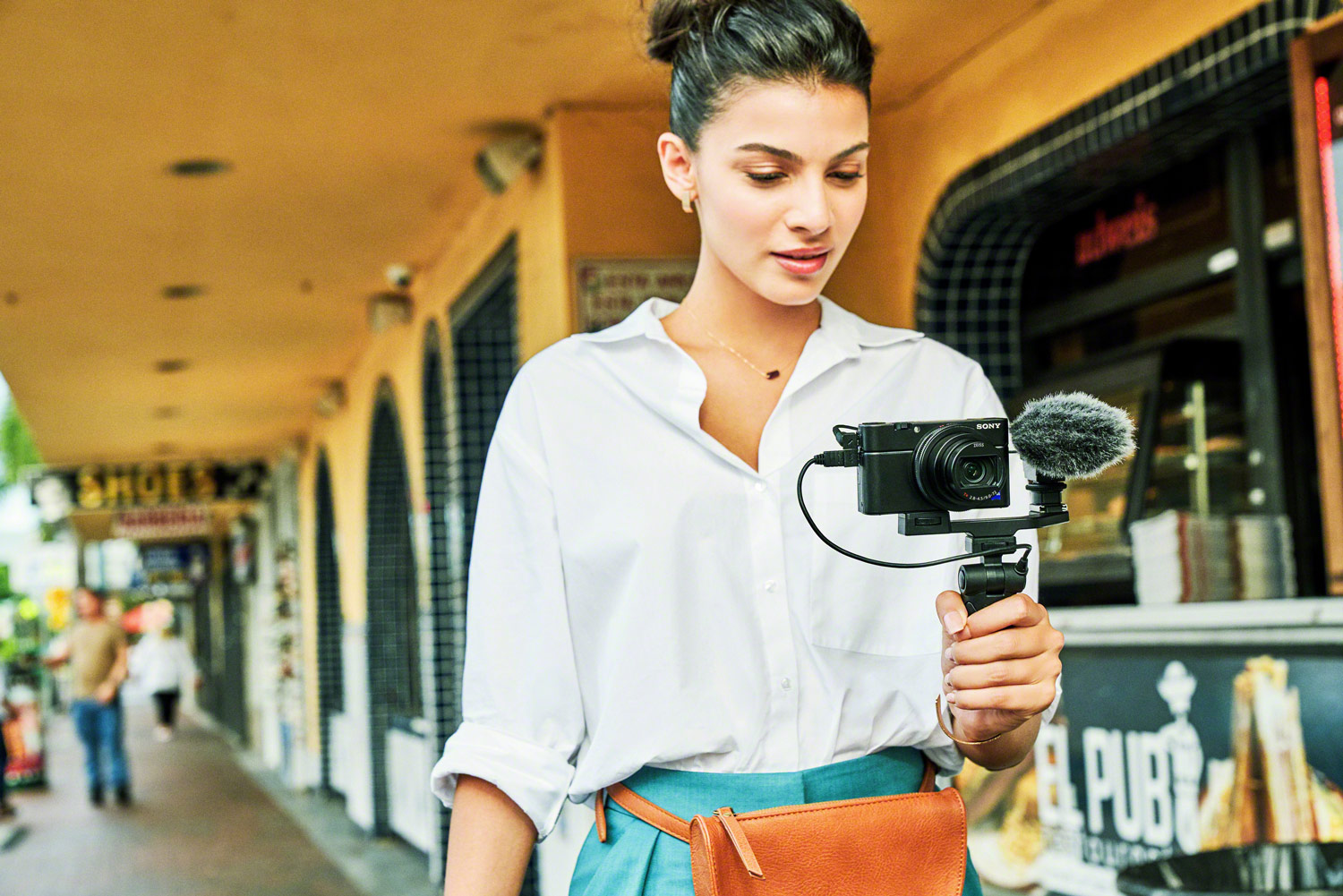Sony just took a great compact camera and made it even better with the RX100 VII — and we can’t wait to get our hands on it. Simply put, it took the RX100 VI and married it with features from the A9, Sony’s $4,500 full-frame flagship mirrorless camera. The new camera is due sometime in August for $1,200 which, we suspect, will cause a steep price drop in the previous version which currently sells at the same price.
As Sony executives described it, the RX100 VII brings some of the power of the A9 — a sports-oriented camera that targets professional photographers — to a compact point-and-shoot that you can carry with you practically anywhere. But the RX100 VI was already fast, shooting a sizzling 24 frames per second at full resolution. The VII actually slows this down a little, to 20 fps, but builds on it by adding the A9’s signature ability to capture action with “blackout-free” shooting. Whether framing your shots through the electronic viewfinder or the LCD screen, that means you won’t see any black frames breaking up your sequence, letting you keep an uninterrupted eye on your subject.
As part of the latest generation of Sony cameras, the new RX100 also features Real-Time Tracking and Real-Time Eye Autofocus for people and animals. As an added bonus, Real-Time Eye AF will work in movie mode, as well, a feature we first saw on the recently-announced A7R IV. Vloggers will appreciate the inclusion of a 3.5mm audio input, a first for the series, for improved audio using external microphones. Along with Sony’s usual Optical Steady Shot, digital stabilization is now also possible when shooting 4K videos.
Sony claims the RX100 VII acquires focus in as little as .02 seconds, a hundredth of a second faster than the RX100 VI, in case anyone is keeping track. It has what looks to be the same 1-inch stacked 20.1MP CMOS sensor paired with a new Bionz X processor that performs 60 focus calculations per second. The new autofocus system uses 357 phase detection points and 425 contrast detect points. The 24-200mm f/2.8-4 lens remains unchanged.
Sony’s RX100 line has always been a favorite choice among compact cameras. We easily named the RX100 VI the best point-and-shoot camera available when it launched just over a year ago, and we expect the VII will carry on that legacy when it arrives later this summer. Stay tuned for our review as soon as we can lay our hands on a production sample.





